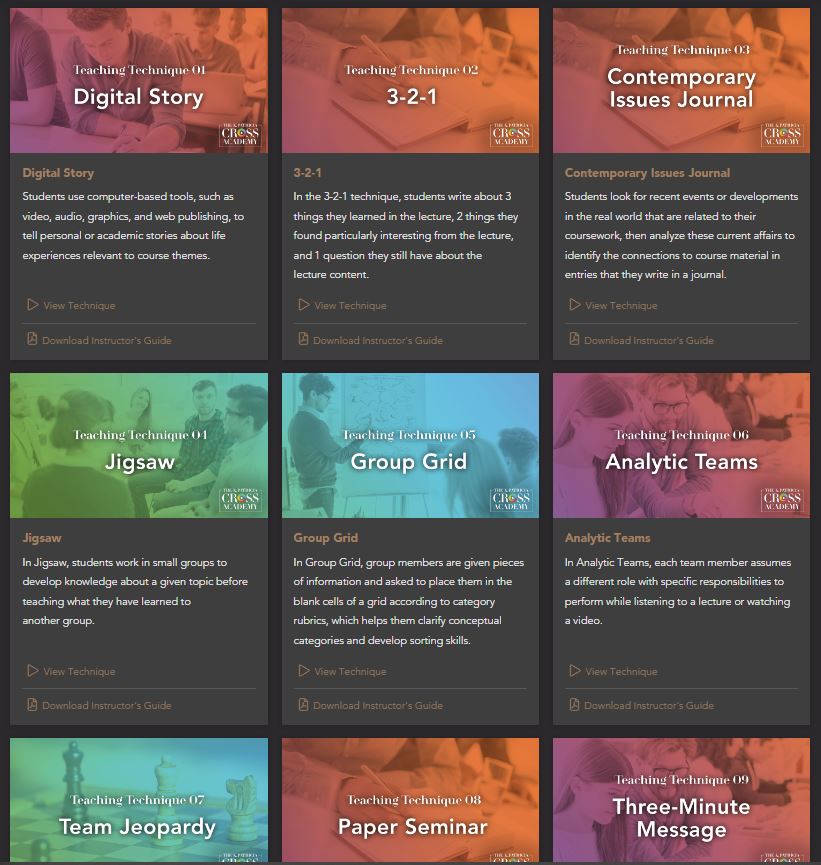
Explore our Dynamic Active Learning Resources
Additional Resources
How to Make Your Teaching More Engaging
10 Creative Ways to Better Engage Your Students
Active Learning Increases Student Performance in Science, Engineering, and Mathematics
How to Make your Teaching More Engaging
15 Ways to Engage Your Students In-person, Online, and in Zoom
Annotate This: How a Common Academic Practice Can Boost Learning
First Shot Impressions for the Active Learning Professor: Higher Ed Activity Stations
Structuring Short-Term Group Work Online, with Zoom Breakout Rooms
Zoom: Interactivity & Active Learning Strategies
Active Learning Cheat Sheet – Vanderbilt CFT
Active Learning in Hybrid and Physically Distanced Classrooms
Encouraging Student Engagement During Synchronous Meetings: Preventing Midterm Drop-Off
To Learn, Students Need to Do Something
Why Your Students Are Disengaged
Muddiest Point with Tech Tools
What is Active Learning?
At Saint Leo, we believe that our students should be actively involved in the learning process. Regardless of whether your students are sharing a table on campus, connecting remotely from their family room, or working at 3:00 AM from some faraway location, they should be engaged in meaningful activities that help them not only master the content, but also gain awareness about their own learning processes. Rather than being passive participants in their courses, our students write about their ideas, work collaboratively to solve problems, and curate resources that bridge their experiences with their education. All of these are examples of active learning.
Some of us may think of engagement as listening to lectures, watching videos, or completing assessments, but there’s much more to active learning. In each of those examples, we see faculty-centered environments. If we say our students are listening, what is it you picture? Most likely, you’re imagining a professor lecturing and students observing from their desks. If we say watching, perhaps the image that comes to your mind is a video that a professor has shared with the class. And if we say completing an assessment, what image appears? Maybe you picture students working in silence, recalling the information that was previously given to them. Notice the difference between these examples and the ones mentioned earlier?
When we create active learning environments, we are putting students at the center. This learner-centered approach shapes our classrooms and is an integral part of our course designs.
With a little planning, active learning strategies can be incorporated into any class and can be used in any discipline. While there are countless versions and adaptations of active learning strategies, we’ve gathered a few resources that explain some of the most effective techniques for creating more learner-centered environments.

